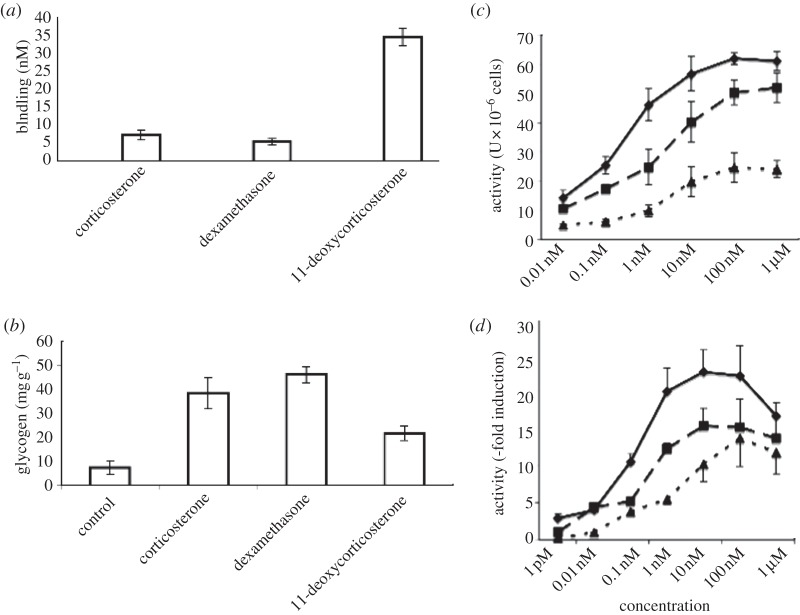Figure 6.
Glucocorticoid attributes of 11-deoxycorticosterone. (Statistical analyses: one-way non-parametric analysis of variance and Kruskal–Wallis test.) (a) Corticosterone, dexamethasone and 11-deoxycorticosterone specific binding to GR, y-axis: relative binding activities, mean ± s.e.m., n = 4 throughout. (b) Induction of liver glycogen deposition in adrenalectomized rats by corticosterone, dexamethasone and 11-deoxycorticosterone, 100 µg per 100 g body weight: controls received vehicle alone. Values are means ± s.e.m., n = 8. All three steroids significantly induced glycogen deposition, p < 0.05 or better. (c) Induction of tyrosine aminotransferase (TAT) activity in rat hepatocytes by dexamethasone, corticosterone and 11-deoxycorticosterone (DOC). Values are means ± s.e.m., n = 3. TAT was significantly stimulated by 11-deoxycorticosterone at concentrations above 1 nM, compared with 0.01 nM values (p < 0.05 or better), but significantly less than corticosterone-stimulated values at concentrations of 0.1 nM and above (p < 0.05 or better). (d) Luciferase activity induction in the GR reporter system by dexamethasone, corticosterone and 11-deoxycorticosterone (DOC) Values are means ± s.e.m., n = 3. Luciferase was significantly stimulated by 11-deoxycorticosterone at concentrations above 1 nM, compared with 0.01 nM values (p < 0.05 or better), but significantly less than corticosterone-stimulated values at concentrations of 1 nM (p < 0.05) and 10 nM (p < 0.005). (c,d) Diamonds, dexamethasone; squares, corticosterone and triangles, DOC.

